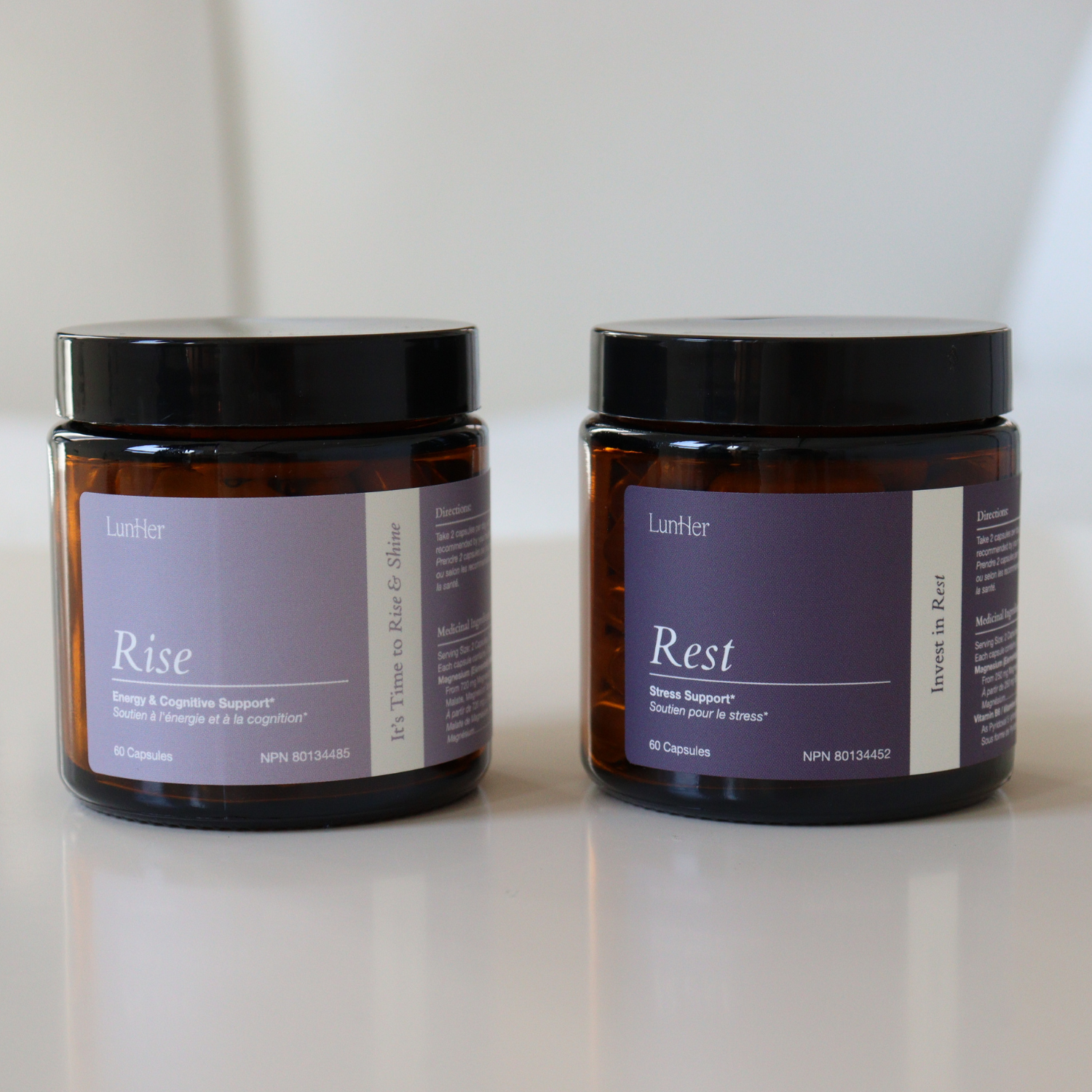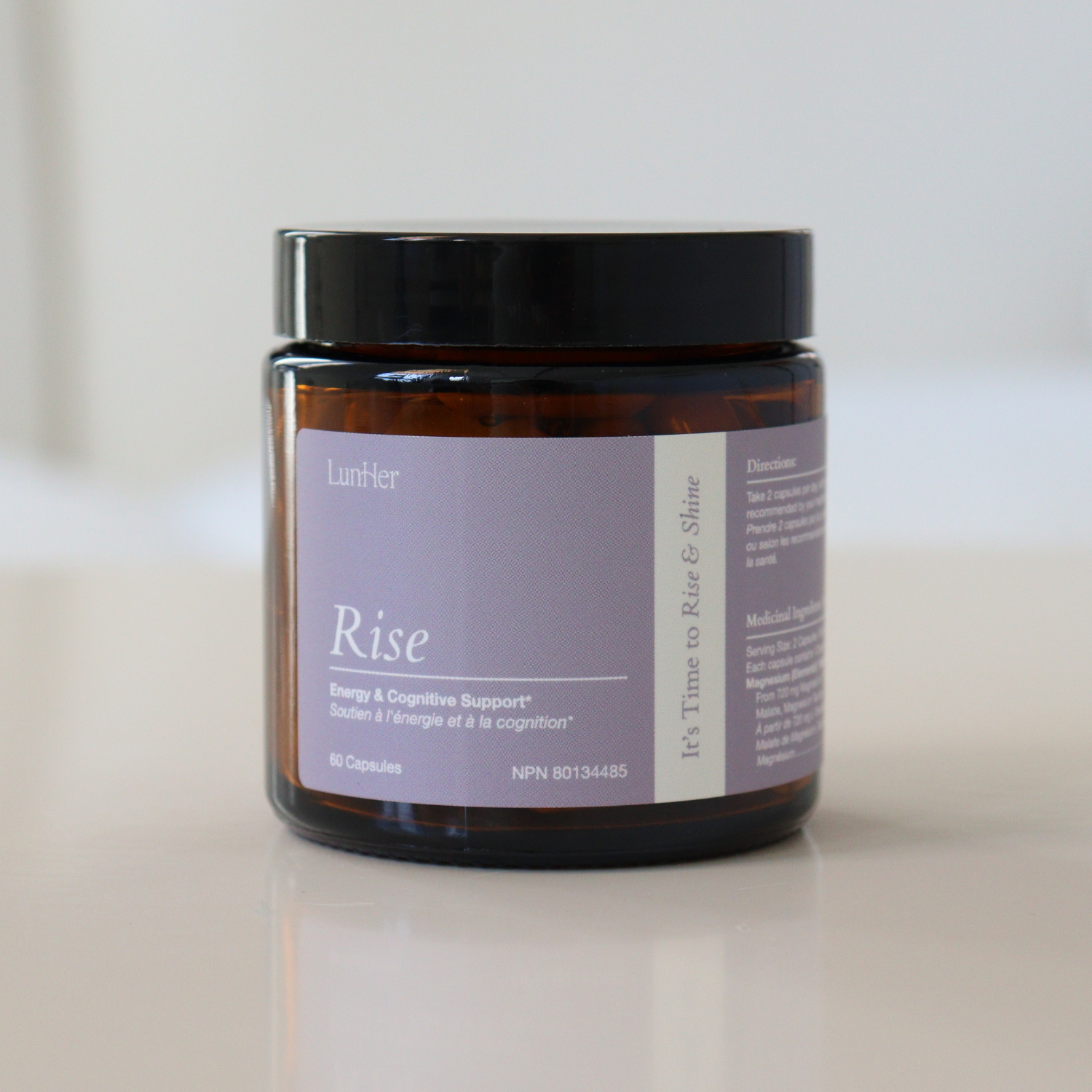
IU vs mg for Vitamins: What's the Difference? (And Why it Matters for You)
Have you ever flipped your vitamin bottle around and wondered what all those numbers and letters mean? IU, mg, mcg - it's like a secret code. But don’t worry, we’re here to decode it for you.
The LunHer Take
Understanding how to read vitamin labels can help you feel confident about what you're taking and why it matters for your health.
IU (International Units) was traditionally used to measure the effect of vitamins.
To make labels easier to understand and more consistent, the FDA replaced IU with metric units like micrograms (mcg)and milligrams (mg) on supplement facts labels starting in 2019–2020.
What does IU mean?
IU stands for International Units, a measurement once used to describe the biological effect of vitamins, hormones, and enzymes. It may be used for medications, vitamins, hormones, and enzymes. Unlike milligrams (mg) or micrograms (mcg), IU doesn’t measure weight, it measures how much impact that nutrient is expected to have in your body.
IU vs. mg/mcg: What’s the difference?
IU measures the effect of a substance, instead of using other measurements. This is useful because it allows for comparison between different forms of the same substance.
So, 1,000 IU of Vitamin D isn’t the same as 1,000 mg of Vitamin D. In fact:
-
1,000 IU of Vitamin D = 25 mcg
-
1,000 IU of Vitamin E = 670 mg (if it’s natural d-alpha-tocopherol)
This is why comparing IU to mg across nutrients doesn’t work. It’s apples to oranges. As discussed, IU measures the biological effect of a substance while milligrams (mg) and micrograms (mcg) measure the mass of a substance.
Why Did the FDA Make the Switch?
The United States Food and Drug Administration (FDA) required that supplement facts labels change IU to metric units in 2019-2020. The benefit of IU is that it provides an international standardization for substances. But you can’t use IU to compare different substances. On the other hand, mg or mcg can be used to compare the mass of one substance to another. However, you might still spot IU on labels.
Types of Vitamins Measured in IU
If you look at a vitamin supplement facts label in the United States, you will see the amount of each vitamin per serving and the percent daily value that the vitamin provides. The daily value (DV) is the recommended amount of the vitamin to consume each day. The percent daily value on the label (sometimes listed as % DV) tells you how much the vitamin is contributing to your daily needs.
Here’s how the measurements and percent daily values have changed since the 2019-2020 update by the FDA.
Vitamin A
Instead of IU, vitamin A is now measured in micrograms of retinol activity units (mcg RAE). RAEs provide standardization across different sources of vitamin A. For example: 1 mcg RAE = 1 mcg retinol 1 mcg RAE = 2 mcg supplemental beta-carotene 1 mcg RAE = 12 mcg beta-carotene
Vitamin E
The DV unit for vitamin E is now milligrams alpha-tocopherol. This helps standardize the measurement across natural and synthetic vitamin E.
On a supplement facts label, 1 mg vitamin E (listed as alpha-tocopherol) equals 1 mg of natural alpha-tocopherol or 2 mg of synthetic alpha-tocopherol.
Vitamin D
The DV unit for vitamin D has also changed. Vitamin D is now measured in micrograms (mcg).
Since 1 IU of vitamin D equals 0.025 mcg, an 1,000 IU vitamin D supplement will now be listed as 25 mcg per serving.
Unlike vitamin A and vitamin E, the IU conversion of vitamin D does not differ by form. Most supplements use vitamin D3 (cholecalciferol) in their products.
At this time, you will often see both IU and mcg for vitamin D on a supplement facts label.
The Bottom Line
When you’re choosing a multivitamin or supplement, especially one that supports fertility, mood, energy, or immune health, label literacy helps you know exactly what you're taking and why it’s working.
IU used to help standardize the potency of vitamins, but the world is moving toward simpler, more consistent measurements. So next time you see mcg or mg instead of IU on your supplement label, you’ll know exactly what you’re looking at and how to choose what’s right for you.





